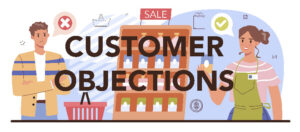8 Steps To Prevent Customer Objections at Your Dealership
Boost your sales team’s confidence and close rate by identifying common objections early and preparing effective responses in advance.

Objections are often an integral part of the sales process, which can arise from the moment the customer walks in until the time they leave, whether a sale is made or not. Typically, the consensus on whether objections hinder a successful sale often depends on how the salesperson handles and resolves them.
When objections arise, they can significantly impact a customer’s emotions and attitude, influencing not only their perception of the product being considered but also their judgment of the salesperson’s knowledge, ability and competence. If the salesperson isn’t clear and concise in their product demonstration, customer confusion can create an objection that can disrupt an otherwise positive sales process.
In some situations, customers voice an objection intentionally, to try to gain negotiating position, while others may not feel comfortable purchasing something unless they first raise an objection to force the salesperson to earn the right to sell something to them.
Regardless of how they emerge, managing customer objections is a key component in any sales process, and one that requires salespeople to be completely prepared so they don’t get caught off guard. Unfortunately, many years of observing and coaching salespeople have shown me that too many of them go through a sales process hoping that no objections will surface and then get quite stressed when they do. However, there is a much more effective approach.
Advanced Preparation
Instead of battling objections when they arise, salespeople should anticipate them and develop responses in advance. The usual objections are often similar from customer to customer, so salespeople can prepare responses and quickly recall them when needed.
Once memorized, a salesperson can make situational adjustments to fit each objection as they come up. This will increase a salesperson’s confidence level in handling them and reduce the stress that accompanies them with previously well-thought-out answers.
Of course, salespeople need to analyze what causes objections in the first place, because that can change the direction of a sales process on a moment’s notice. Some objections are created by the salespeople themselves without realizing it. Here are some situations where salespeople may cause objections later on.
1. Don’t relieve customer anxiety
In my first sales book, “Know Your Customer,” I reviewed why knowing your customers’ day can help relieve the anxiety some customers walk in with. Many of these are caused by the normal things we all deal with in a day. When I was a salesperson years ago, I had to address real-life situations because sometimes customers walk in the front door with obvious anxiety about something that had happened earlier. Maybe they:
- Got a speeding ticket on the way to the dealership
- Had an argument with their spouse on the phone in the parking lot
- Got a phone call that a son got suspended from school for getting in a fight
- Received word that a parent received a cancer diagnosis
- Got a phone call that her husband lost his job
There are more, but those are just a few of life’s typical, stressful moments that can emotionally derail a customer’s feelings and make a customer too unsteady to proceed.

In most cases, these things are not a salesperson’s business. But when the customer makes them part of the meet-and-greet process, additional discussion needs to take place before proceeding to allow the customer to get it off their chest. Sometimes, this may include rescheduling or (at the very least) taking additional time to be a friend, with sincere, person-to-person sympathy, to help get customers back into the frame of mind for a productive shopping process.
It’s not appropriate to pry into a customer’s personal life, but customers are people, too, and in vulnerable times, sometimes they need a friend and that might happen to be a salesperson at a particular moment in time.
2. Product doesn’t meet the customer’s needs
In the early stages of a meet and greet, too many salespeople are determined to make a great first impression by showing off their product knowledge to the customer, so the customer perceives them as professional and competent. As a result, the average salesperson talks way too much and misses valuable information in those first few minutes.
Keep it simple in the meet and greet process. Talk less, ask questions, listen and take notes. Confirm what you’re hearing often with a nod or comment and ask for clarification when it’s needed. It’s not just what they want, but why they want it, how they plan to use it and what they’re willing to pay for it.
The salesperson who isn’t actively listening runs the risk of putting their customer in front of the wrong product, which virtually ensures an objection will arise later.
3. Didn’t nail down a budget range
Getting the true budget from the customer is harder than most think, especially when salespeople attempt to get that number before they have built comfort, rapport and trust. Although we need it, trying to get a customer’s budget before trust is built is often a mistake, as many customers intentionally give a number that’s lower than reality or, in some cases, have been advised to do so before they walk into the business.
Salespeople are often satisfied with getting just one budget number from their customer. It is important to get not only a preferred budget but also a maximum dollar amount they would consider for the product that meets every need or want they had when they walked in.
4. Missed body language cues
Asking well-thought-out, specific questions will be enough to get all the information a salesperson needs to find the perfect product that fits the customer’s budget.
However, the perceptive salesperson will also pay close attention to the customers’ nonverbal clues and body language to ensure that it complements the words they are saying. If they are saying one thing but illustrating uncomfortable body language that contradicts that, the perceptive salesperson must ask follow-up questions to confirm that what the customer said is acceptable to them.
5. Ensure the customer is comfortable
A huge customer fear is that they are afraid the salesperson might try to “pull something on them.” This can be easily prevented by announcing what you plan to do next and asking if it’s OK with them.
Ask something like: “Would you prefer that we start looking at products that are on the lower price of your budget first, or the higher end?” This is a good way to start. Each time you want to go in another direction, announce it to the customer first and ask if they’re comfortable with that.
6. Confirm that the decision-maker is present
Far too many salespeople spend hours working with a customer, and when trying to close them, find out that they aren’t the final decision-maker. Some sales managers and coaches like to ask that question near the middle of the process, but this should be covered in the early stages. The key is when to ask and how to ask.
When to ask: The salesperson must achieve comfort, rapport and trust first. The customer must answer questions willingly before asking if they are the final decision-maker.
How to ask: With comfort, rapport and trust in place, it’s fine to say: “Are you the person who can approve a final purchase, or will someone else help you decide to purchase today?” If both buyers are not present, the salesperson should reschedule or get the second buyer on the telephone.
7. Tune into whether a customer feels comfort, rapport & trust
No transition from meet and greet to product demonstration should move forward until comfort turns into rapport and rapport turns into trust. Observations of salespeople have proved to me that this is the point where more deals are lost than any other in a sales process, because this one step was rushed and overlooked.
8. Slow down in the first few minutes
Customers come to a business to look at their product, and they are excited and can’t wait to go do it. They’re often anxious and in a hurry, but too many salespeople succumb to the urge to rush their customer in front of the product before other necessary things have been established.
Salespeople need to establish a slower pace initially before jumping into their company’s selling system with each customer. It’s the first test to establish that they will control the process, not the customer. The moment a customer dictates the pace of the shopping process is the exact moment when the salesperson gives up any sort of control over their selling system and how the customer participates in it.
Implementing these eight steps can help prevent objections that derail an otherwise enjoyable shopping process and increase the odds of earning a sale.



